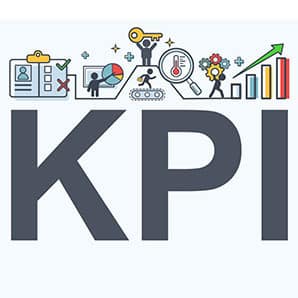Practice Management
Calculating Optical KPIs for Staff Evaluation
This article excerpt was reprinted with permission from GPN.

Using your Key Performance Indicators for Staff Evaluation
Your KPIs represent more than the health of your practice. They also represent the functional success of your staff. It’s great if you “feel good about” or make a good connection with your team – critical, in fact. But unless that good feeling bears fruit in your bottom line, it’s at best an unrealized opportunity for improvement. Measuring staff performance allows you to concretely and confidently understand how to best utilize and improve your team, playing to their strengths, enhancing under-developed skills, and maximizing their impact on your revenue stream.
Case Study for Staff Evaluation
I recently heard an excellent example of Key Performance Indicators in action from one of our EDGEPro users. The office manager in a busy, two-doctor location had – as many do – an energetic, highly confident optician on staff who routinely sold more product than anyone else on the team. This optician was justifiably proud of his sales volume, and convinced that he made an unparalleled contribution to the practice revenues. The manager, however, had been carefully tracking the optical KPIs, and was aware that the employee was not in fact generating more revenue than other members of the team. As she began digging in to the nuts and bolts of the optician’s individual KPIs, she was able to uncover the underlying reason for his shortfall.
In actuality, while his volume of sales was about 10% higher than the next highest producer, this optician was selling far fewer high-end lenses, with a significantly lower AR percentage. His average frame price was also lower. Because the manager was on top of the staff KPIs as well as the practice KPIs, she was able to have a confident, factual conversation with the optician and demonstrate clearly how his performance was not making as much of a contribution as he thought. She used his personal benchmarks to help him understand the results of his performance concretely. Together, she, with the employee himself and the optical manager, sourced some advanced product training for the optician, and set goals for improving the “other” KPIs – those related to product type, rather than volume.
This true story is an excellent example of the potential effectiveness of using Key Performance Indicators. The practice benefited immediately in both tangible and intangible gains. Revenue rose – a lot. Patients got better products and options in their eyewear, which increased their satisfaction and likelihood to recommend as well as return. The optical staff gained valuable experience in successful teamwork and the optician himself felt validated as a sales person and became more invested in the success of the business. Wins all around.
Calculating Optical KPIs for Staff Evaluation
You can leverage your optical Key Performance Indicators for staff evaluation to achieve similar results – honing your staff effectiveness, increasing your patient satisfaction, and enlarging your bottom line. Tracking KPIs for individual staff evaluation is exactly the same process as tracking them for the practice. You simply calculate the statistics based on the sales of one person at a time, rather than as a whole. Let’s briefly review those stats and how they’re determined.
- Number of frames sold (volume) x Average frame price = Total Frame Revenue
- Number of lenses sold (volume) x Average lens price = Total Lens Revenue
- Number of lenses sold with AR / Total Number of lenses sold = AR percentage
- Number of progressive lenses sold / Total number of lenses sold = Progressive percentage
- Don’t forget to check:
- Number of progressive lenses sold / total number of multifocal lenses sold
In EDGEPro, these statistics are easy to find. Simply use the “staff filter” to view results by individual sales person on every report. If you’d like to view them side-by-side, our EDGEMarks matrix can be set to “by staff,” which will show you everyone in a spreadsheet-style arrangement. (EDGEPro tip, that matrix can be exported easily to Excel!)
KPIs Help You Get “to the Truth”
When you have your by-staff-member results, you may be surprised. It’s not uncommon for this type of analysis to turn up unexpected results. Hidden issues often surface. Perhaps Jeannine has always produced more revenue, but it turns out that she sells a much-lower rate of anti-reflective lenses. Or maybe Bob sells a ton of frames, but more of them are free-to-patient, which reduces his overall contribution. It’s important to remember as you begin to pinpoint areas where your staff needs improvement is that each of those areas represents a potential opportunity, a chance to positively impact your bottom line, without incurring more costs. These are the incremental improvements that will change your practice performance for the good, over time. Proper monitoring of these KPIs on a long-term basis will help keep your team on the path to constant and enduring progress.

Transform Your Practice
It’s not enough to know where your practice is relative to Key Performance Indicators. The overview (practice-level) benchmarks are most useful as a starting point. They highlight areas that require deeper investigation. Analyzing staff performance in the optical is an excellent use of your time and energy, because the potential dividends are very high. Changing the revenue picture in your optical can transform your practice, but remember – the changes are implemented at the staff level.
The behavior and effectiveness of every single person impacts your bottom line. It pays to know who’s doing what, and how well, so you can take action!

